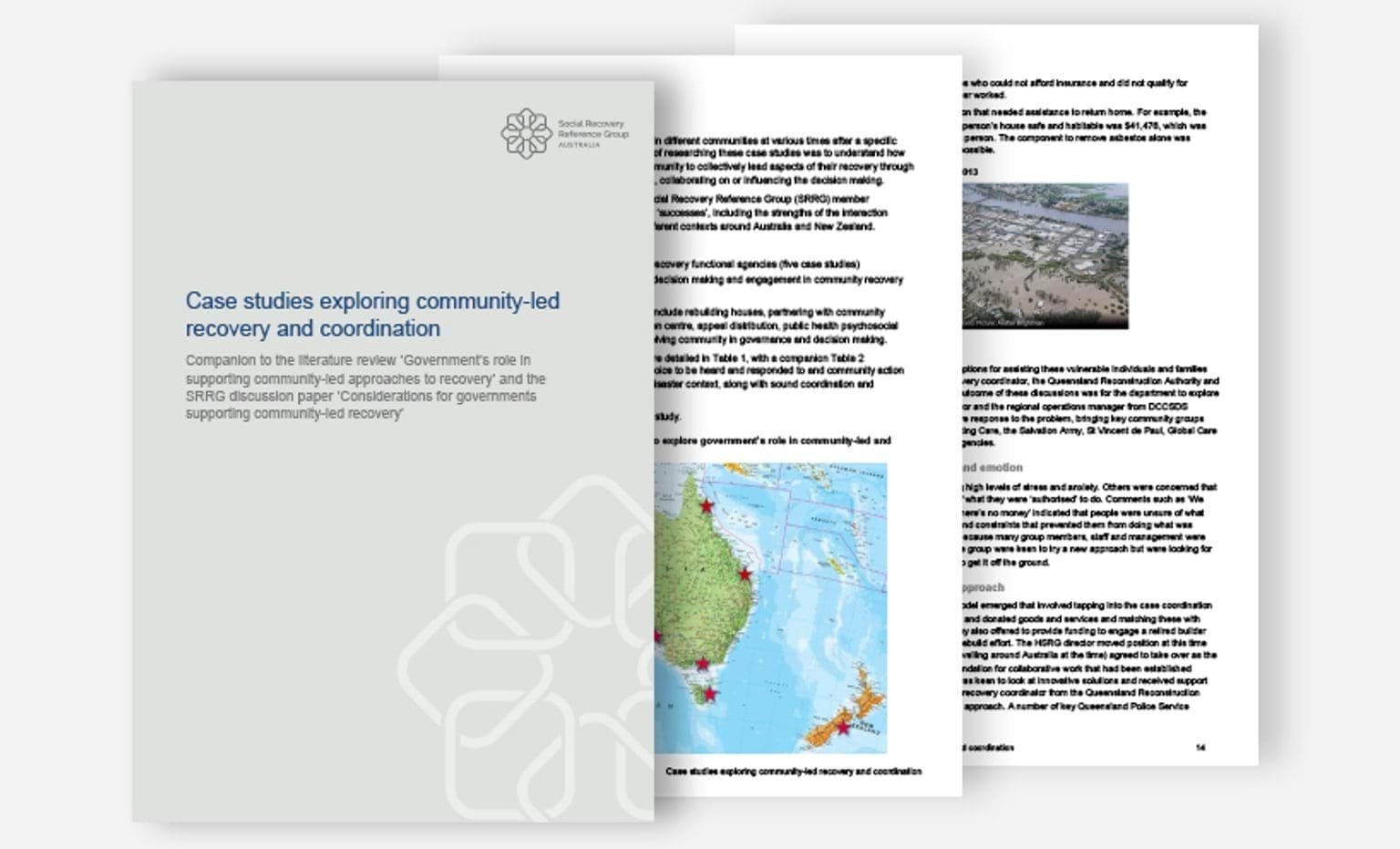
Link to resource
This resource is hosted on the Australian Institute for Disaster Resilience website(opens in a new window).
PDF DOC | 2.1MB
The Australian Institute for Disaster Resilience develops, maintains, and shares knowledge and learning. This is in support of a disaster resilient Australia.
Their Knowledge Hub contains many resources to support recovery. They include resources from the Social Recovery Reference Group. This group has a human and social services perspective in emergency management. They promote the centrality of community in disaster recovery and preparedness.
This resource is part of the Australian Institute for Disaster Resilience recovery collection.
Details
| Title | Case studies exploring community-led recovery and coordination |
|---|---|
| Owner | Social Recovery Reference Group |
| Date last updated | December 2019 |
| Resource type | Reflection |
What is this about?
These case studies are a companion to the literature review 'Government's role in supporting community-led approaches to recovery' and the Social Recovery Reference Group discussion paper 'Considerations for governments supporting community-led recovery'. It includes nine case studies in different communities after a specific disaster.
Who is this resource for?
- State Government
- Local Government
- Community Service Organisations
- Non Government Organisations
- Community Recovery Committees
Table of contents
Case study 1: Bundaberg Floods, Queensland, 2013
- Building a future together – supporting community agency and action on the rebuild
Case study 2: Waroona Complex Bushfires, South East Western Australia, 2016
- Collaborative public management – state and local government working beside local community people and organisations
Case study 3: Evacuation Centre Experience and Planning, Nauiyu Community, Northern Territory, 2018
- ‘Making sure people are walking that comfortable walk, in there, with you’
Case study 4: Ravenshoe Café Explosion, Queensland, 2015
- Managing an appeal fund within a community-led recovery framework
Case study 5: Canterbury District ‘All Right?’ campaign, New Zealand, 2010–11
- Creating a platform for community-led initiatives for psychosocial recovery
Case study 6: East Coast Bushfires, Tasmania, 2006
- Listening to and responding to the voice of the communities
Case study 7: Recovery Adaptation, Gippsland, Victoria, 2013–14
- Asset Based Community Development applied to recovery
Case study 8: Sherwood Fires, south-east of South Australia, 2018
- ‘Supporting community leaders to lead community recovery’
Case study 9: Canterbury Waimakirri District Earthquakes, New Zealand, 2010–11
- Council engaging and being enabled by the community
Updated